Why you aren't breathing correctly and 9 exercises to help with that
Advertizement
Wellness
Why you lot aren't breathing correctly and ix exercises to help with that
Research shows that irresolute the way we breathe can influence weight, athletic functioning, allergies, asthma, snoring, mood, stress, focus and so much more.
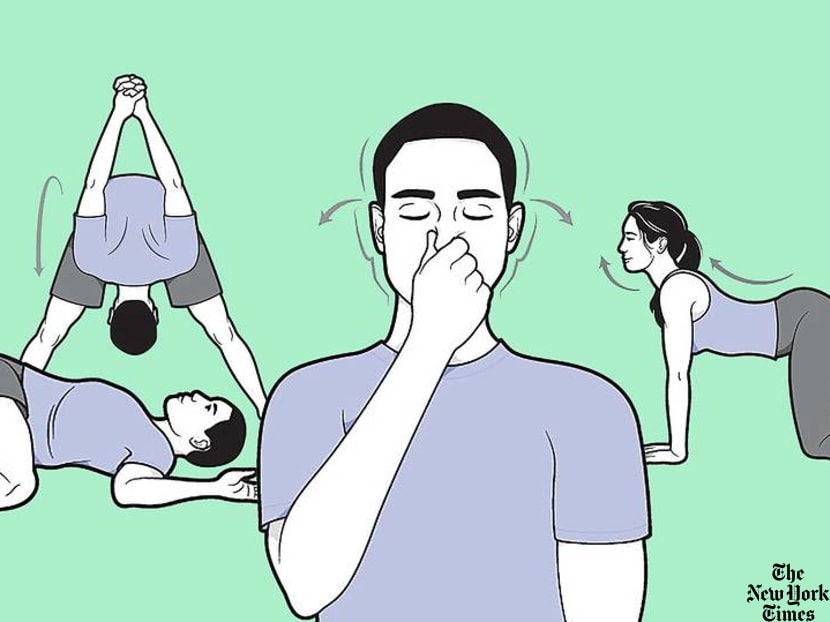
(Art: The New York Times/Brown Bird Design)
Breathe. We do it roughly 25,000 times a day but until recently, few of us gave much thought to this automatic bodily role.
"If there'due south some good to come up out of COVID-19, it's that people are paying more attending to how they're breathing," said James Nestor, writer of Breath: The New Scientific discipline Of A Lost Fine art, which explores how we breathe, how that has changed and how to exercise it properly. "You can't be truly salubrious unless you're breathing correctly."
How we breathe affects us at a cellular level. Inquiry shows that changing the way we breathe tin influence weight, athletic performance, allergies, asthma, snoring, mood, stress, focus and then much more.
You can learn to breathe better, and these exercises tin aid.
Close YOUR Oral cavity
Almost half of us are chronic mouth breathers, a practise that can irritate the lungs, increase the risk of respiratory infection and sap the body of moisture, and has been linked to bad breath, sleep apnoea and other health atmospheric condition. Breathing in and out of the nose filters, heats and treats the air.
It helps us takes fuller, deeper breaths. Information technology also allows us to blot more oxygen and raises the intake of nitric oxide, a molecule that opens the claret vessels, which increases apportionment and allows oxygen, blood and nutrients to travel to every function of the trunk. Immune function, weight, mood and sexual part are all influenced past nitric oxide.
For the nearly 40 per cent of people who suffer from chronic nasal obstacle because of allergies, sinusitis, a deviated septum or any of the other many causes, shutting the mouth can be a challenge.
The offset step is to articulate congestion. "There are sprays and neti pots," Nestor said. "I put eucalyptus oil under my nose."
1. Congestion clearing: An exercise in The Oxygen Reward, by Patrick McKeown, may help decongest the nose: Sit upwards straight, gently inhale and exhale through the nose, so pinch both nostrils shut.
Shake your caput upwards and down or from side to side until you feel the need to exhale. Have a irksome jiff in through the olfactory organ, or through pursed lips if the nose is still congested. Breathe calmly for 30 seconds to a minute and echo five more times.
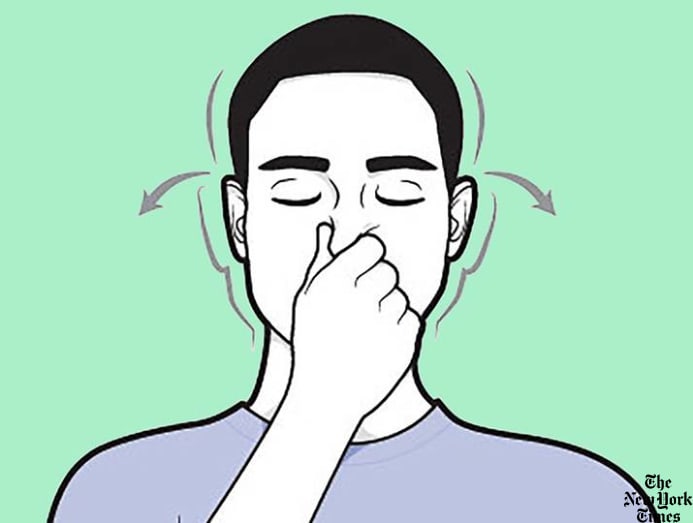
Take SOME DEEP BREATHS
The boilerplate adult engages as little every bit 10 per cent of the diaphragm, the jellyfish-shaped musculus nether the lungs primarily responsible for respiration. Shallow breast breathing can overburden the middle, strain the neck and shoulder muscles, and keep you in a constant land of low-grade stress.
Diaphragmatic breathing, too known as belly breathing, can retrain yous to exhale more deeply, permit the lungs to soak up more oxygen and reduce stress.
two. Belly animate:Lie apartment on your dorsum with your knees bent. Place 1 hand on your chest and the other on your belly merely below your rib cage. Breathe in slowly through the nose so your breadbasket expands against your hand. The hand on your chest should not motility.
Slowly exhale through the olfactory organ or pursed lips, and feel the belly move down to its original position. Repeat for five to 10 minutes. As yous become more comfortable with the technique, practise sitting or standing.
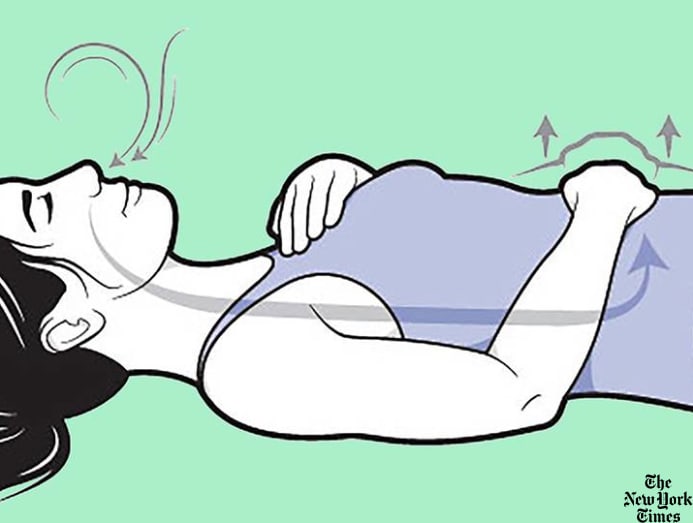
Grab A BALL AND Curl AWAY
When you breathe into the chest, muscles in the cervix, shoulders, upper chest and dorsum try to aid out and tin become tight. And when muscles of the upper trunk are chronically tight, they can restrict normal breathing.
Massaging the upper trunk with a lawn tennis or massage ball tin break this wheel and loosen, lengthen and relax the muscles. (Annotation: Avoid using a golf ball for these stretches. Its hard surface may cause more than pain than good, particularly when it comes to the neck muscles.)
three. Pectoral curl:Stand facing a wall and place the brawl under your collarbone at the sternum. Lean against the wall and slowly gyre the ball back and along, side to side, along the valley below your clavicle several times. Repeat on the other side of your chest.
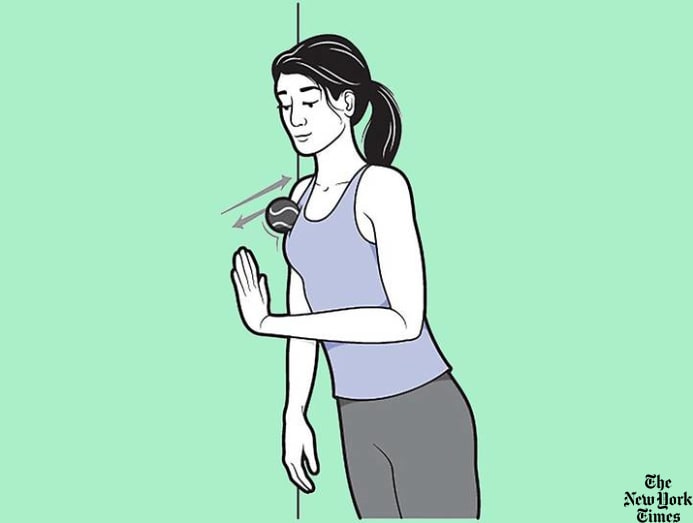
4. Intercostal roll: Standing with your side to the wall, raise the arm closest to the wall overhead and place the palm on the wall. Put the ball under the armpit at the top of your ribs, lean into the wall, and gently rock dorsum and forth.
Lower the ball one inch (2.5cm) and echo. Go along downward your side, massaging the intercostal muscles between your ribs, until you accomplish your lower ribs. Repeat on the other side.
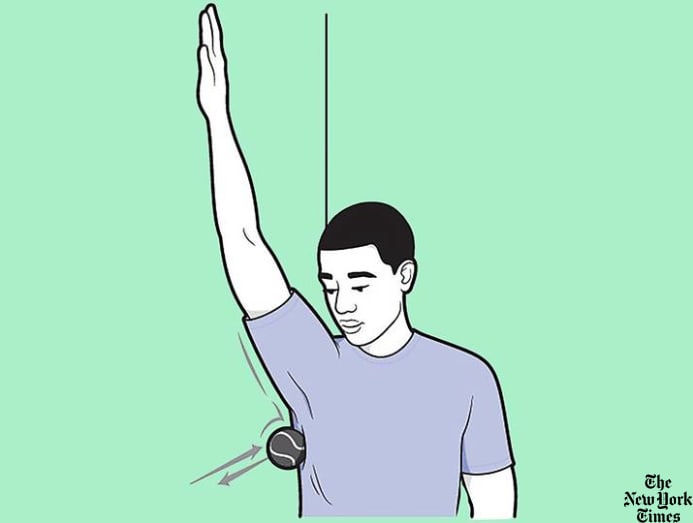
5. Upper back roll: Plough then your back faces the wall. Identify the brawl at the top of your trapezius, the upper back muscle, and lean into the wall.
Gently coil the ball forth the outer border of the shoulder blade by bending and straightening the knees then lifting and lowering the heels. Think about tracing the line a tank superlative strap would make. Echo on the other side.
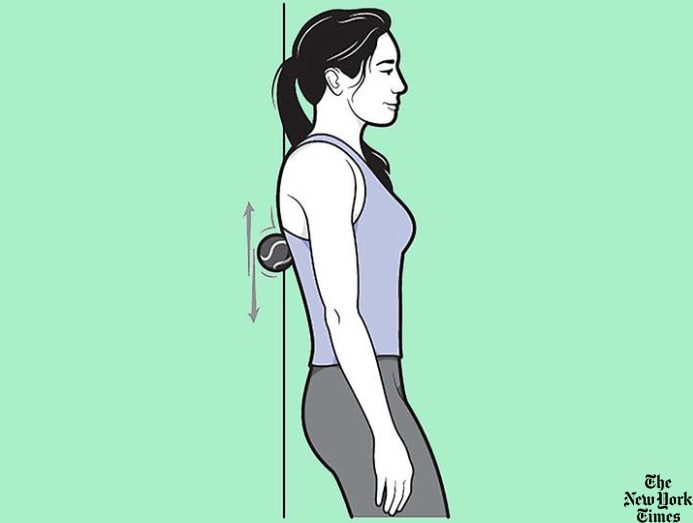
six. Neck release:Come down onto your back with a yoga block or thick book under your head. Turn your head to the correct and identify the brawl on your upper neck backside your ear.
Have 5 deep breaths. Then gently nod three or four times, and milk shake your head three or iv times. Switch sides.
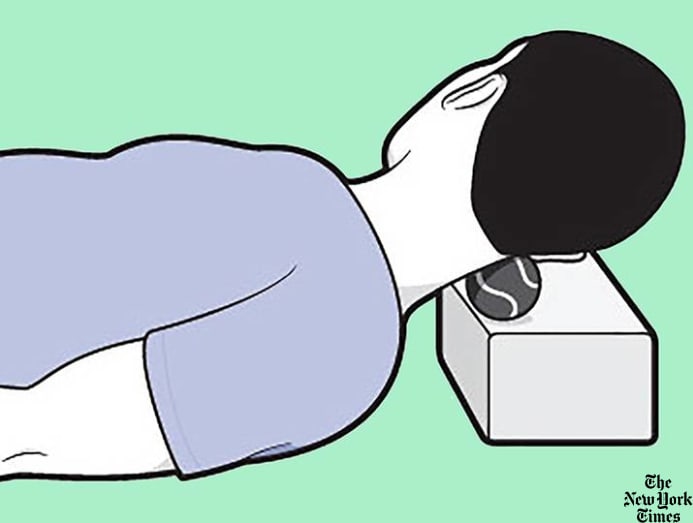
Stand up UP Directly
Poor posture restricts the diaphragm and slows down activities like blood period and digestion. These exercises stretch the legs, lengthen the back and open the shoulders, helping to draw the shoulders back and decompress the spine.
vii. Cat/cow:Come into a tabletop position on the floor, with hands under shoulders and knees under hips. As y'all inhale, drop the belly, press the chest forward and look up. Breathe, tuck the mentum toward the chest and round the spine.
Flow betwixt these cow and cat yoga positions for three to 5 breaths, post-obit your breath.
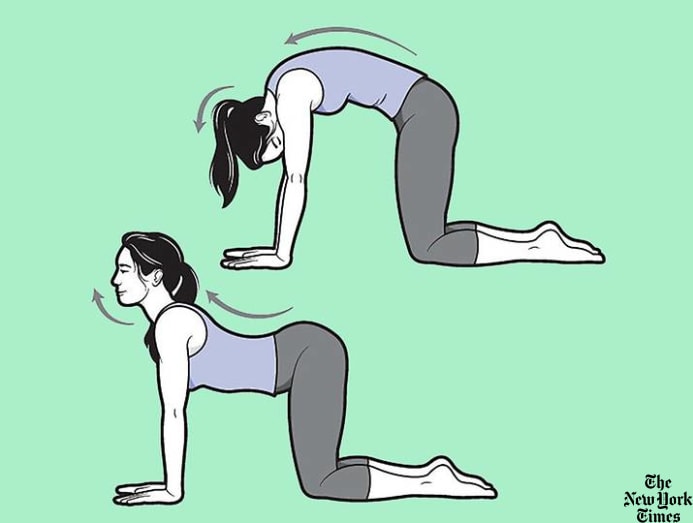
eight. Wide-legged forward fold:Stand with your feet wider than hips distance, typically about 4 anxiety (120cm) apart. Turn your toes in. Interlace your hands behind your back.
Inhale, open the breast and bring the palms closer together. As you breathe, fold frontwards and allow your artillery to hang overhead. If it's uncomfortable to hold your palms together, hold on to a towel or yoga strap. Stay here for v to 10 breaths.
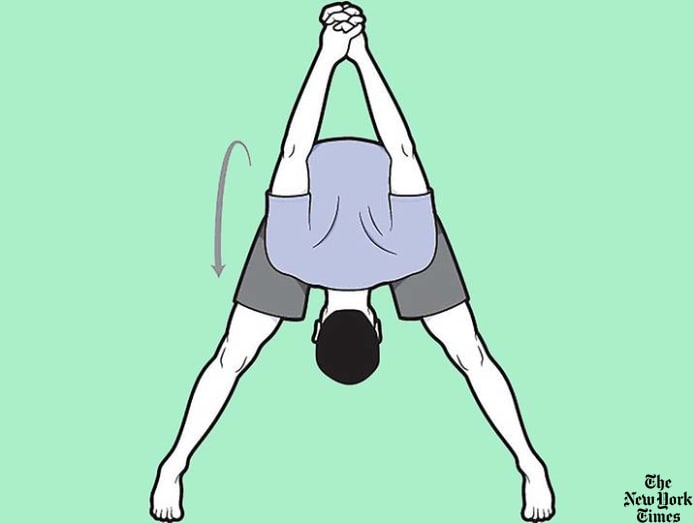
9. Supine spinal twist:Lie on your dorsum, hug your knees into your chest and take a few breaths. So extend your arms out in opposite directions, making a T shape. As you exhale, lower your knees to the right, keeping both shoulder blades on the floor.
You lot can deepen the twist past looking over your left shoulder. Take several breaths here, inhale and move the knees back to centre, exhale and lower them to the left, and take the twist in the other management.
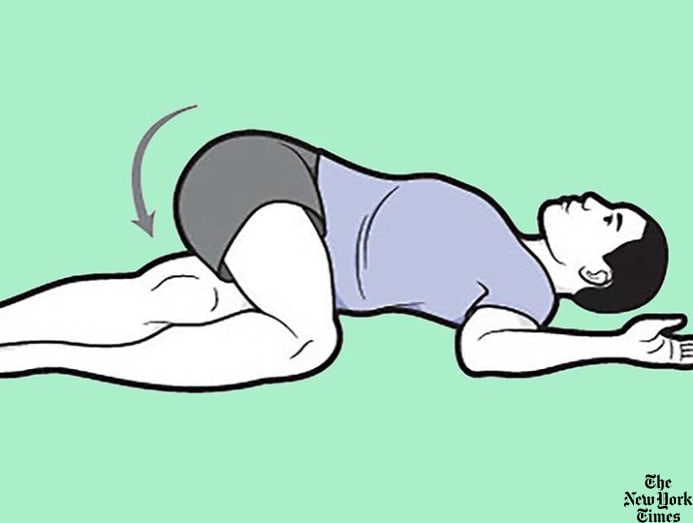
By Kelly DiNardo © The New York Times
This article originally appeared in The New York Times.
https://www.nytimes.com/2020/07/xviii/at-home/coronavirus-breathing-exercises.html
Recent Searches
Trending Topics
Source: https://cnalifestyle.channelnewsasia.com/wellness/9-exercises-to-breathe-better-and-why-you-should-try-them-237621

0 Response to "Why you aren't breathing correctly and 9 exercises to help with that"
Post a Comment